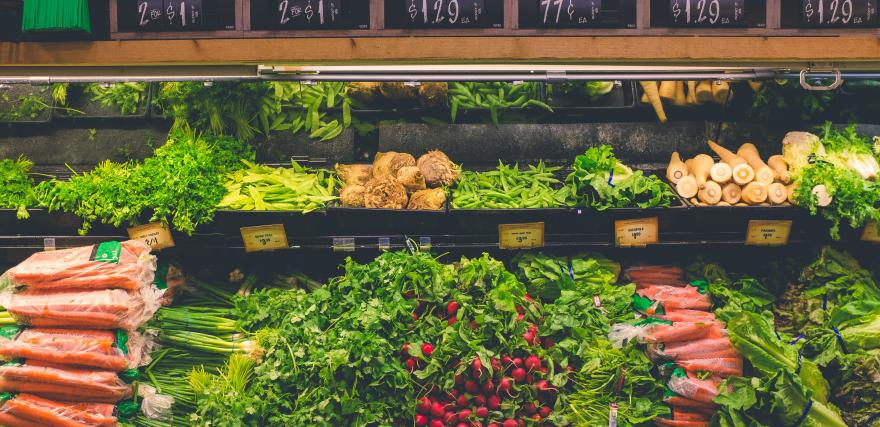(Unsplash)
Source: SmartBrief, December 2018
Economic recession, recovery and realignment have been major drivers of change in both the US food and beverage industry and within consumer values and purchasing behaviors. Despite low unemployment and long after experts declared the Great Recession over, an uneven economic recovery and the growing bifurcation of wealth have shaped — and altered — how many consumers source their food and understand brands. One sign of this has been the rising popularity and growth of discount grocery operators like Aldi, Lidl, dollar stores and ongoing grocery buying at Walmart. Reflecting the popularity of discount operators, who we are as a nation is changing at a socioeconomic level, due to a dwindling middle class. While the share of US adults in the middle class has been shrinking since the 1970s, both extremes of the income spectrum have grown. Many would argue that the lower ends of the income spectrum have grown disproportionately compared to the others.
The Hartman Group’s The Business of Thrift: Understanding Low-Income and Value-Oriented Consumers report explores the needs of diverse types of value-seeking consumers and finds that most consumers engage in “thrifty” behaviors — especially in their household shopping — because frugality itself is culturally valued. However, for mid to high-income consumers, frugality is more of a choice, whereas for low-income consumers, it is a necessary way of life.
Among diverse topics linking to value-oriented and low-income shoppers, The Business of Thrift report examines the topic of food insecurity and circumstances where households have trouble affording food or experience various types of limitations to accessing food. The report finds that the lower one’s household income, the more likely one is to experience all varieties of such limitations including planning ahead and budgeting for food shopping. Low-income consumers perceive price to be a key barrier between their current realities and their ideals and goals when it comes to improving their health and wellness and eating overall.
Another key finding from The Business of Thrift is that despite the wealth gap, quality attributes like organic and less processed cues are still growing in importance culturally. Related, as fewer households are able to call themselves “middle class,” the traditional consumer base of many brands and grocery stores is gradually eroding. At the same time, even those who are doing “okay” financially often can find themselves prioritizing thrift when it comes to food. The report finds that consumers across all income levels share similar social and political attitudes as well as similar general attitudes around eating, cooking, and health and wellness. Yet, low-income consumers are more likely to view their diet and health as diminished relative to other consumers.
Limited food access is surprisingly widespread, with around half of consumers waiting for payday, feeling the need to tighten their food budget, and making trade-offs in the name of price. However, low-income consumers are more likely to experience limitations, experience them more frequently, and experience them in more severity. Among low-income consumers, strict food budgeting is very common. For some, proactively managing a strict budget is freeing as it allows them to eat how they like within their means. For others, the budget is reactive, determined by other expenses, bank account levels, or other factors, particularly limited time and energy.
There are a multitude of ways in which retailers, manufacturers and restaurant operators can work to better meet the needs of consumers challenged by limited finances. For example, low-income consumers would welcome solutions that make tracking grocery spending easier on the fly. Setting and sticking to a strict budget is the first budgeting behavior to loosen as consumers move up the income scale. Likewise, splurging around payday shifts away from groceries and more toward restaurants.
Don’t leave low-income consumers behind
One key to relevantly meeting the needs of low-income households lies in understanding what low-income populations your company serves: younger, low-income consumers want to participate in current food trends (e.g., fresh, less processed, global culinary trends, quality cues) but at lower prices. Families with children are looking for good deals on kids’ staples and ways to get a dinner on the table that is tasty enough, healthy enough and quick to make.
Understanding your thrift-driven shoppers will also help you know when to time promotions around payday (when folks are stocking up) and the mid-month/end-of-month stretch (when folks really need to stretch those dollars and are only buying necessary staples).
Within food retail, low-income shoppers need more affordable solutions for fresh food, whether it’s smaller pack sizes at lower price points, innovations that maximize freshness and prevent spoilage or discounts that bring down the total cost (such as $5 off when you buy $15 of produce). Another option is meal deals, or a promotion on a suite of cross-merchandized products that make an inexpensive, healthy, tasty meal that can last a few days. When it comes to center store, low-income shoppers often don’t have the flexibility to take advantage of sales if an item isn’t on their list already or if they must buy multiple items. Solutions that make sales and coupons easier to access and use for everyone would help them participate more.
In terms of restaurants, low-income consumers view fast food – and dining out in general – as a treat, even if they do it often. While value is important, operators shouldn’t neglect taste and food quality – eating out within QSR is an affordable way for low-income consumers to treat themselves and their families and experiment with new items and flavors.

